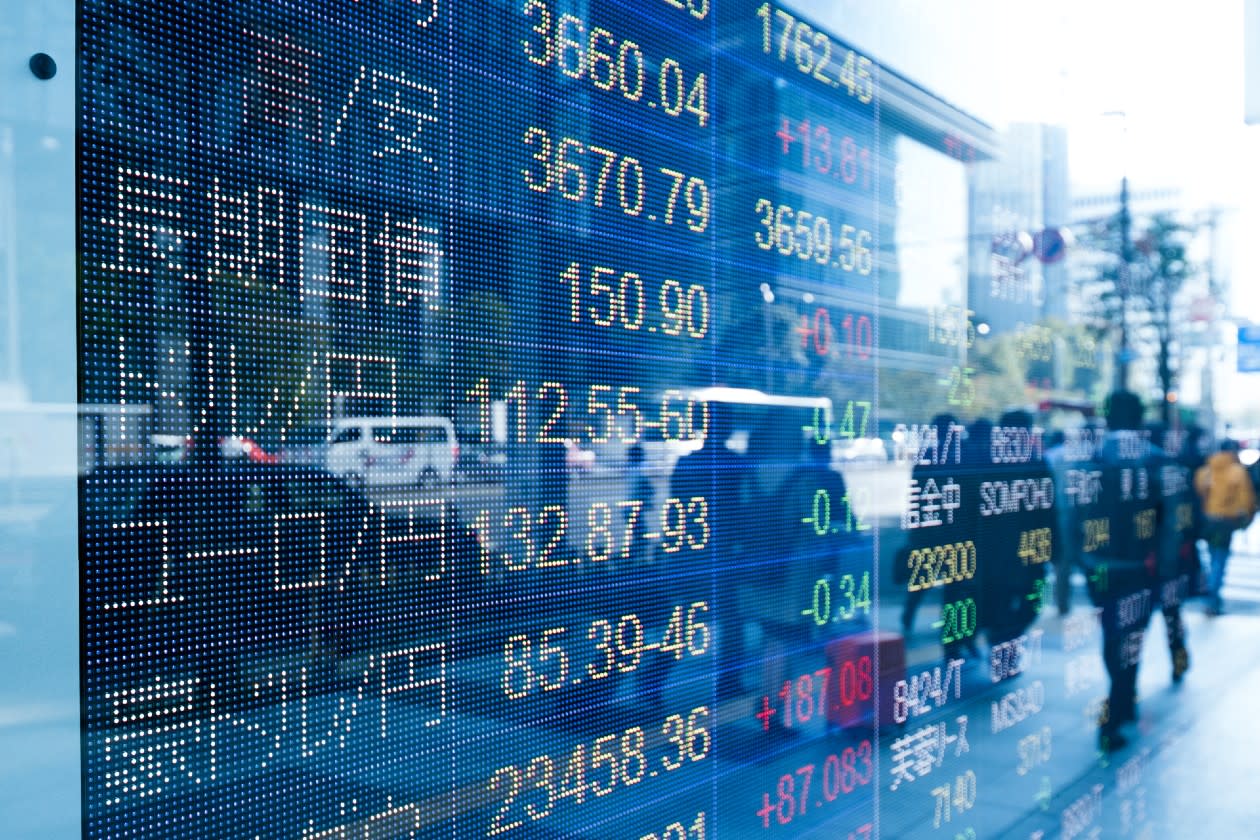It’s been a while since investors have seen this much stock market uncertainty.
On Monday, many thought we were seeing another ‘Black Monday’ stock market crash like in 1987 as markets continued to tumble off the back of US recession fears amidst other worries.
Wall Street suffered its worst day in nearly two years, Japan’s stock market experienced its biggest daily fall since 1987 and the UK suffered some heavy losses too.
While a possible US recession has been the main focus of concern, another has been brewing under the surface – the yen carry trade.
What is a carry trade?
A carry trade is when investors, often hedge funds, borrow ‘cheap’ money from a country where interest rates are lower and use it to try and get higher returns from investments in another currency – like the US dollar.
However, by borrowing in one currency, and going ‘short’, to invest elsewhere, you’re at the mercy of exchange rate volatility and risk the currency you’re shorting rising – and that’s exactly what’s happened with a rallying yen.
What impact has the yen carry trade had on stock markets?
For decades, Japan has had ultra-loose monetary policy with low interest rates to try and solve its deflation problem. In fact, rates were even negative up until last year.
However, with inflation above the 2% target for the last two years, last week the Bank of Japan decided to raise interest rates for the second time since 2007.
The Japanese yen soared as a result, and this is when the carry trade started to unwind as borrowing costs were then pushed higher.
A carry trade is effectively a short against a currency, like the Japanese yen, to invest long elsewhere. But when you go short, and what you’re shorting starts to climb, the losses on your short trade can be unlimited.
To help limit these losses, traders scrambled to close their positions by paying back what they borrowed and the exchange rate losses on top.
The result?
A mass sell-off, mostly in US dollar-denominated stocks which the traders had to sell to pay back their borrowed yen.
Is there more room for the yen carry trade to unwind?
It’s the million-dollar (or yen) question and the truth is, no one really knows.
From a valuation perspective, the yen still looks undervalued compared to its history. This indicates there’s room for it to go higher. But, just because something’s undervalued doesn’t mean it will revert back to its average, and it certainly doesn’t mean it’ll do it any time soon.
Some experts are predicting that we’ve only seen between 50-60% of the full unwinding of the carry trade, suggesting we could still see some market upset from here.
However, the Bank of Japan will have a strong role to play in what happens next.
On Wednesday, market fears subsided briefly as we got certainty from the Bank of Japan that rates will stay where they are while markets are so shaky.
This could help stabilise the yen and therefore any further unwinding but there are no guarantees.
What could be next for investors?
The unwinding of the yen carry trade isn’t the only reason for the recent global downturn and has actually taken more of a back seat to US recession fears – and this will likely dominate market news for the next few weeks.
This month we’re due to get much more US economic data for markets to react to. And depending on how strong (or not) these are, we could see more sharp market swings.
On a more positive note for investors though, a US rate cut is now almost a certainty for next month and this brings some hope of respite.
Of course, we could also see further unwinding hurt market sentiment from here. But, more importantly, if you zoom out and think with a long-term perspective, it all becomes a very small part of the picture.
While we’ve seen so much market noise, with plenty of ups and downs, the key to successful investing hasn’t changed. The best solution to any market risk is to hold a diversified portfolio for the long term. By long term we mean usually five years or more. That way you can ride out the ups and downs that come with investing in the stock market.
This article isn’t personal advice. If you’re not sure an investment is right for you, ask for financial advice. Investments will rise and fall in value, so you could get back less than you invest.



